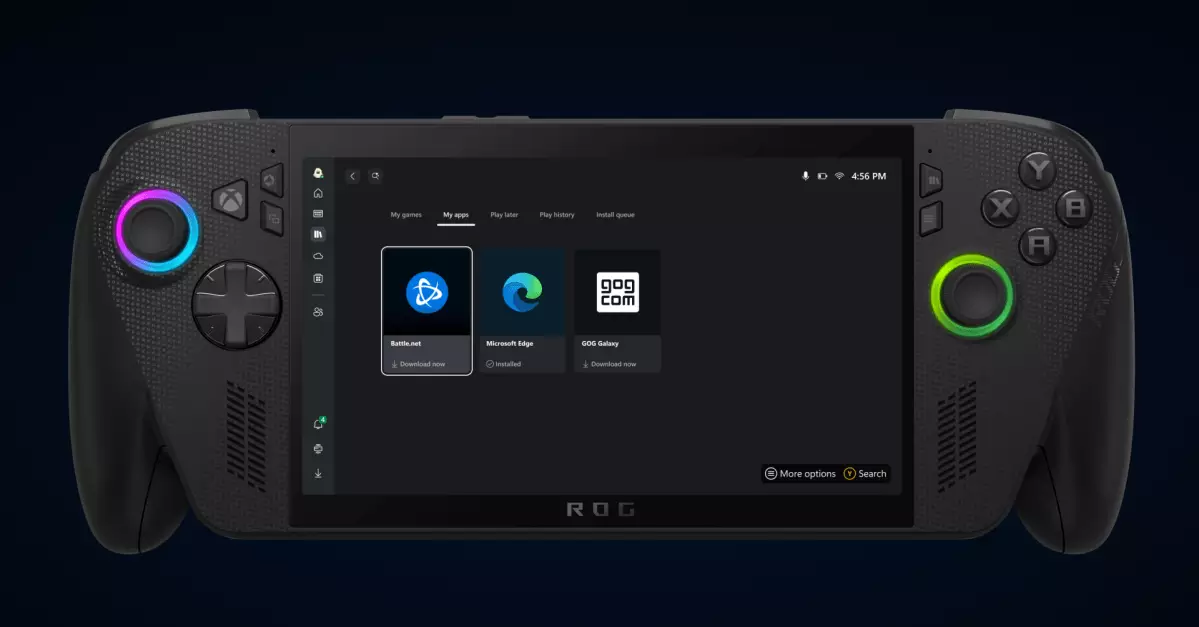In the rapidly evolving landscape of PC gaming, Microsoft’s recent introduction of the “My Apps” feature marks a significant breakthrough in how gamers access and manage their software. This innovation isn’t a mere convenience; it signals a paradigm shift towards a centralized, streamlined gaming experience that could fundamentally alter user interaction with game libraries and utility applications. Instead of navigating through multiple storefronts, desktop icons, or disparate download sources, players now gain a unified hub directly within the Xbox app tailored for Windows 11, promising a more integrated and efficient ecosystem.
This move by Microsoft demonstrates a clear understanding of the modern gamer’s frustrations. The proliferation of third-party applications—ranging from browsers to gaming utilities—has historically complicated the process of launching or managing software, especially on handheld gaming PCs like the Xbox Ally. By creating a consolidated “My Apps” view, Microsoft isn’t just improving usability; it’s positioning itself as the central authority for PC gaming, blurring the lines between Windows and Xbox environments. For gamers, this could be the beginning of a new era where switching between different game stores and utilities becomes seamless and less burdensome.
Strategic Vision and Practical Implications
Microsoft’s strategy reveals a broader vision of merging gaming and desktop experiences into one cohesive interface. The ability to launch platforms such as Steam, Battle.net, and GOG Galaxy directly from the Xbox app signals an acknowledgment that a diverse gaming library must be accessible from a single point of control. The move is particularly compelling considering the push toward handheld game PCs, such as the ROG Xbox Ally, where minimizing reliance on traditional desktop navigation offers tangible benefits.
Practically, this feature simplifies game management for users who juggle multiple libraries and storefronts. Instead of opening a separate app for each publisher or manually searching for downloads online, players can now effortlessly locate, view, and even install third-party applications within a familiar UI. This not only saves time but also reduces frustration, making gaming feel less like a chore and more like entertainment.
However, the rollout is not without teething problems. Testing has already uncovered bugs, such as failed installations within the Xbox interface. Such issues are natural during beta phases but highlight the challenges associated with integrating diverse app ecosystems into a single platform. Microsoft’s willingness to iteratively develop and refine this feature suggests a long-term commitment to perfecting this unified approach. If successful, “My Apps” could become a central pillar in Microsoft’s ecosystem strategy, encouraging gamers to rely more heavily on the Xbox app rather than traditional desktop interfaces.
Implications for the Future of Gaming Software Management
This initiative reflects a broader trend toward consolidating digital entertainment into singular, user-friendly portals—think app stores, streaming platforms, and digital libraries. Microsoft’s push to unify PC gaming apps within its ecosystem could have far-reaching consequences. Not only does it challenge the dominance of individual game stores, but it also disrupts the conventional desktop experience, making it more portable and accessible, especially on handheld devices.
Critics might argue that this approach risks over-centralization, with Microsoft potentially wielding excessive control over users’ gaming choices. Yet, from a pragmatic perspective, it seems a necessary evolution to meet customer expectations for simplicity and speed. As gaming hardware becomes more portable and integrated, so must the software management systems that support them. The success of “My Apps” could set a new industry standard—one where the focus shifts from battling for visibility across multiple storefronts to offering a single, cohesive, and intuitive hub for all PC gaming needs.
Microsoft’s efforts highlight a strategic intent to foster a more fluid ecosystem—one that respects the diversity of gaming platforms while offering a unified entry point. This not only benefits consumers but also signals to developers and publishers the importance of platform interoperability, encouraging further collaboration and innovation.
While still in its nascent stages, Microsoft’s “My Apps” feature embodies a bold vision of the future, where the boundaries between different gaming environments are blurred, and user convenience reigns supreme. It reflects the company’s broader ambition to redefine what it means to be a PC gamer in the modern era—a seamless blend of Windows and Xbox that prioritizes accessibility and efficiency. If the beta tests and initial feedback are any indication, this development could mark a turning point, pushing the entire industry toward a more unified, user-centric future. Whether this initiative will fully realize its potential remains to be seen, but one thing is clear: Microsoft’s innovative approach has the power to reshape the digital gaming landscape fundamentally.

